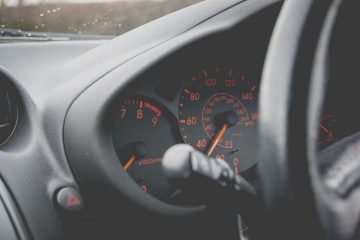There are few things in life that can add as much stress as being financially insecure and having an unexpected expense, bill, or life event. The need for what some might call an “emergency” fund or “rainy-day” fund is just as necessary now as it has ever been. Unfortunately, too many people live paycheck to paycheck with little or no savings. In fact, the Federal Reserve Board determined in May 2018 that “Four in 10 adults, if faced with an unexpected expense of $400, would either not be able to cover it or would cover it by selling something or borrowing money.” Four in ten people. Let that sink in. It is possible that four out of ten of your closest neighbors could not cover a $400 expense.
What does a $400 expense look like you may ask? With new tires costing close to an average of $100, a new set will run most over that $400 mark. Brakes, shocks, and struts can all exceed that mark easily. Maybe you do not have a car that needs any work, but your dryer stops working. Even cheaper dryers can easily exceed the $400 mark. This is not meant to discourage, but to highlight the need for an emergency fund that has been set aside that can help cover these unexpected expenses.
So, you may be asking, what is an emergency fund? To simplify it for those that have never heard of an emergency fund, it is typically a separate savings account apart from your main accounts that carry a sum of money that would help you cover emergencies. I am not talking about the “I need a vacation” emergency, or “I need a bigger TV for the big game” emergency either. I am talking about the “my car stopped working” or “I lost my job” or “I visited the ER” type of emergency. Things in life that are just unexpected and yet can cause significant financial stress on those unprepared.
So, let’s cover 3 basic attributes that make up an emergency fund.
1. An emergency fund is a separate account from other accounts
It is a very important distinction that this account is separate from other accounts. Why, might one ask? The main reason is this account cannot be seen as available everyday income, it is meant to be only available in emergencies. You should never be tempted to take money from it for non-emergencies. See it as an out-of-sight, out-of-mind account. It is like the adult version of putting a $20 behind your driver’s license when you were in high school in case you ran out of gas and had no other means to buy some gas.
2. An emergency fund is in a low risk, accessible account
This fund should also be put in a very safe/low risk but accessible account – like a savings account. This might not give a super awesome interest rate, but it will be insured, and you will have access to it when needed. One should avoid the temptation to invest it inside say, the stock market, as that can have high volatility where you could lose a significant amount on any given day. Investing in something with high risk or volatility with your emergency fund is just asking Murphy’s Law to take effect – as in when the market takes a downturn, is the time when you will need the money.
Likewise, it also needs to be accessible. A certificate of deposit (CD) might seem like a good choice, it generally gives better interest, it is separate from your other accounts, and it will limit you from accessing the account. But it is because of the last reason that you most likely should avoid a CD for this type of account. Most CDs charge an early withdrawal penalty if money is taken out before they mature. In some cases, this might wipe out more than you made in interest – essentially costing you money. That is why a separate savings account can often provide the best combination or risk and accessibility for an emergency fund.
3. An emergency fund has enough money to cover an emergency
This is the attribute that is really specific to an individual’s personal preference and current situation. If you are young, holding down a consistent job and few expenses, then a $1,000 might be plenty and cover most emergencies. If you are older, may be nearing the end of your career, and have significantly more expenses, then $10,000 may be a more reasonable number for you.
As a rule of thumb, I like to encourage people to have at least $1,000 saved to about three months of expenses. Again, the three months is a good measure and can help weather a storm of emergencies like losing a job, a longer than expected hospital stay, or vehicle expenses. It also meets your specific needs without being too constricting or loose.
To wrap up, having an emergency fund can help ease stress on you and your family’s lives. It is hard to get your financial future taken care of without taking care of your current finances. Adding an emergency fund can put you on the right track to giving you control over your finances. If saving enough money to put into an account seems like a stretch, then I would encourage you to read our Quick Savings Tips to find a couple of easy ways to start saving money. It can take a little bit of effort and discipline, but it is attainable. Finally, if you have an emergency, use the fund – that is what it is there for – and do not feel guilty about using it. Just remember, fill it back up when life gets back to normal.
Please note: I am not a certified financial planner (CFP), however, my comments are made based on personal investigation and experience.
Quote of the day: A big part of financial freedom is having your heart and mind free from worry about the what-ifs of life. – Suze Orman


